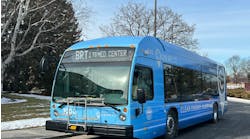The California Department of Transportation (Caltrans) and the Los Angeles County Metropolitan Transportation Authority (Metro) on April 2 announced the addition of two more public hearings to offer community feedback on the Draft Environmental Impact Report/Environmental Impact Statement (EIR/EIS) for SR-710.
Additional public hearings have been scheduled for May 6, at the La Cañada High School auditorium and May 7, at the Los Angeles Christian Presbyterian Church.
The added meetings provide four opportunities to comment on the draft environmental document. The first two meetings are scheduled on April 11 at the Rosco C. Ingalls Auditorium at East Los Angeles College and April 14, at the Pasadena Convention Center. A 120-day public comment period began March 6 and ends July 6.
Caltrans and Metro are under a mandate from two million Los Angeles County voters that passed Measure R in 2008 to study a 100 square mile region affected by congestion and pollution caused by incomplete transportation infrastructure between the end of the I-710 freeway in El Sereno and the I-210 Freeway in Pasadena.
The Draft EIR/EIS proposes five alternatives regarding a 4.5 mile gap separating the freeways.
- No Build option that would leave conditions as they are
- A traffic management system to upgrade and synchronize signals and improvements to local street intersections to more quickly move traffic that exits the dead end freeway
- A rapid bus line featuring high frequency service with minimal stops and potentially a dedicated bus lane
- Light rail to carry passengers between East Los Angeles and Pasadena
- A freeway tunnel that would extend the SR-710
Caltrans-Metro Add Two Public Hearings to Comment on Draft EIR/EIS on SR-710 (1st Add)
No decisions have been made on any proposed alternative in the Draft EIR/EIS.
An EIR is required to comply with the California Environmental Quality Act and an EIS fulfills requirements of the National Environmental Policy Act. The laws require government agencies to identify the significant environmental impacts of their actions and to avoid, minimize or mitigate any adverse effects. Information from public comments will be weighed before preparing the final environmental document.
Altogether, approximately 26 detailed technical studies are included in the Draft EIR/EIS.
Through the process of compiling the Draft EIR/EIS, Metro and Caltrans conducted 92 community meetings, participated in six city-sponsored community forums and held over 200 briefings with community stakeholders.


